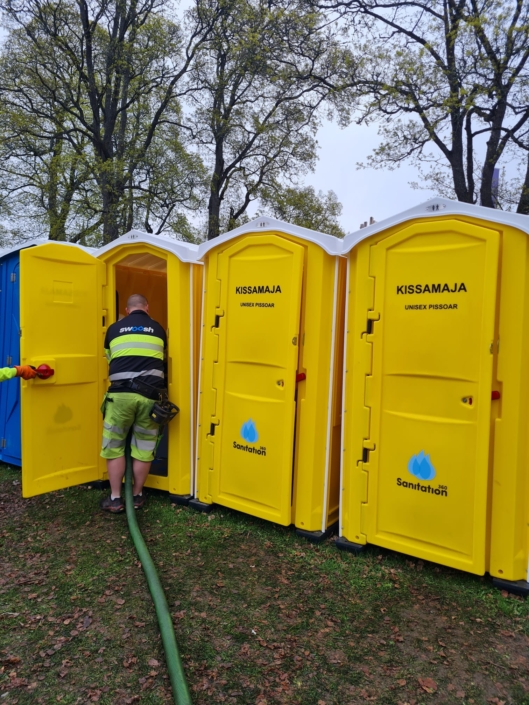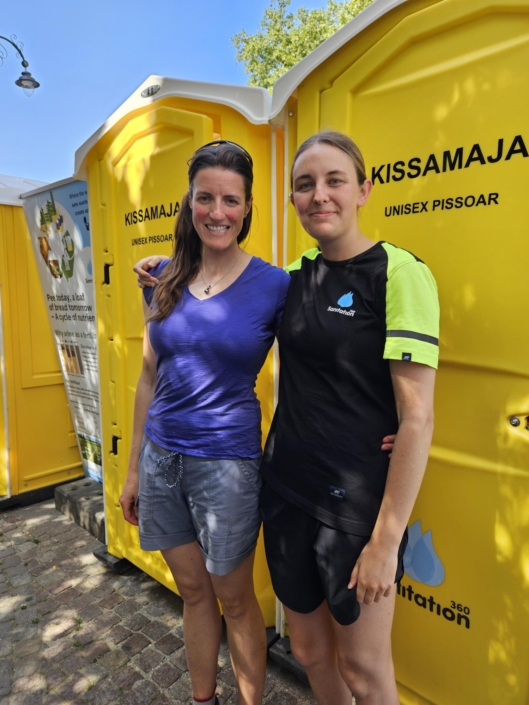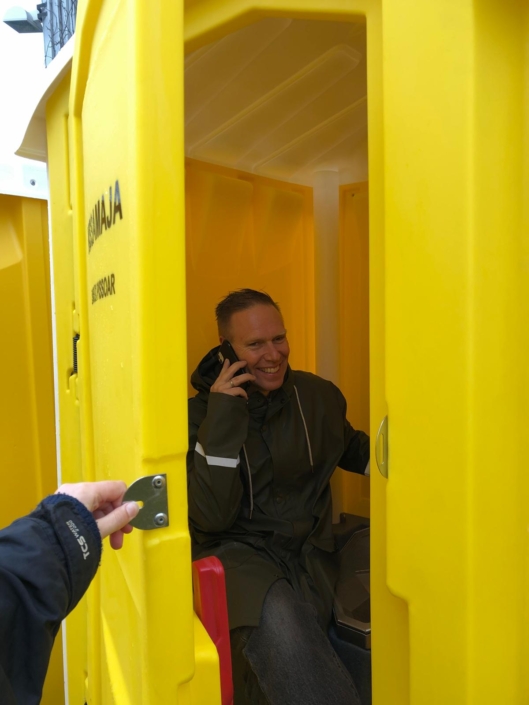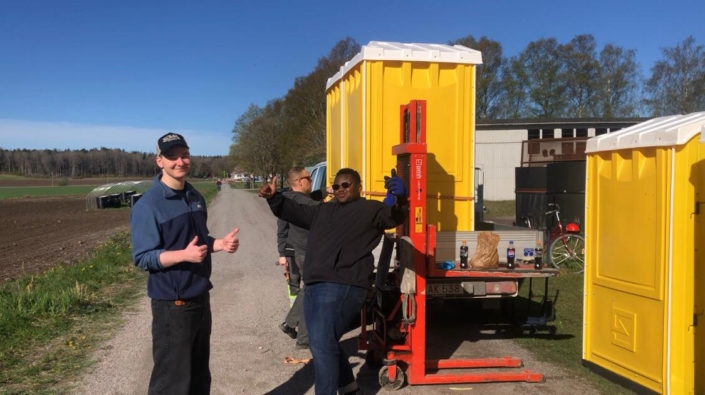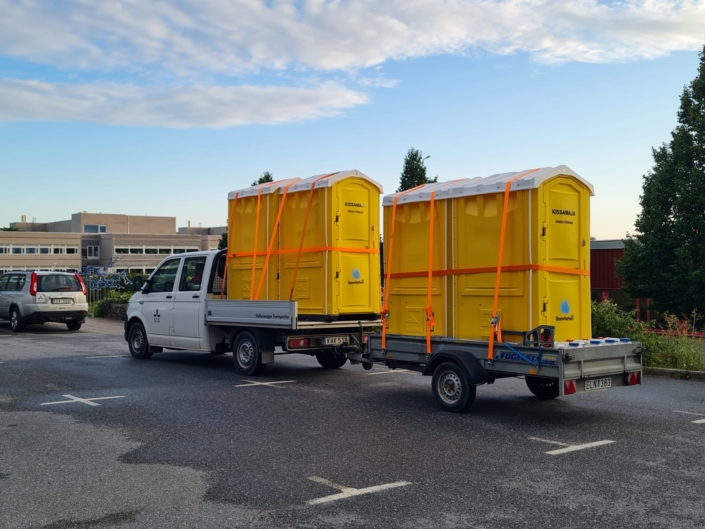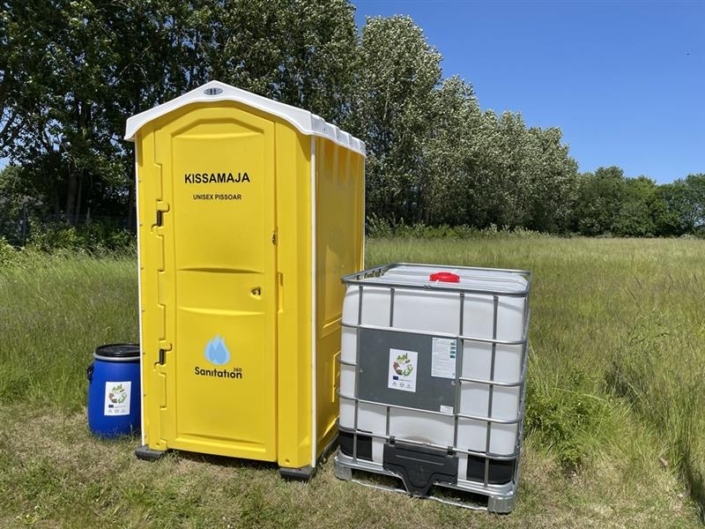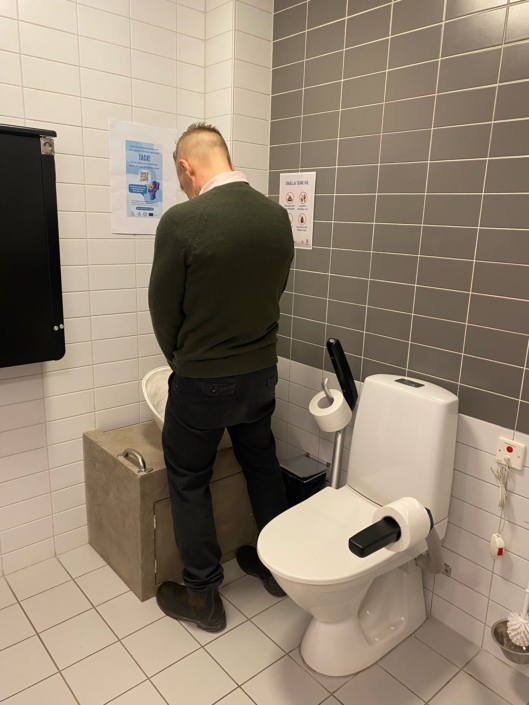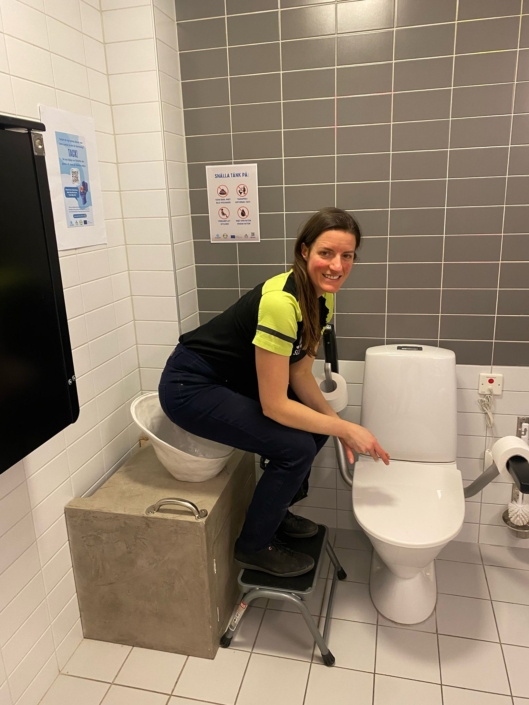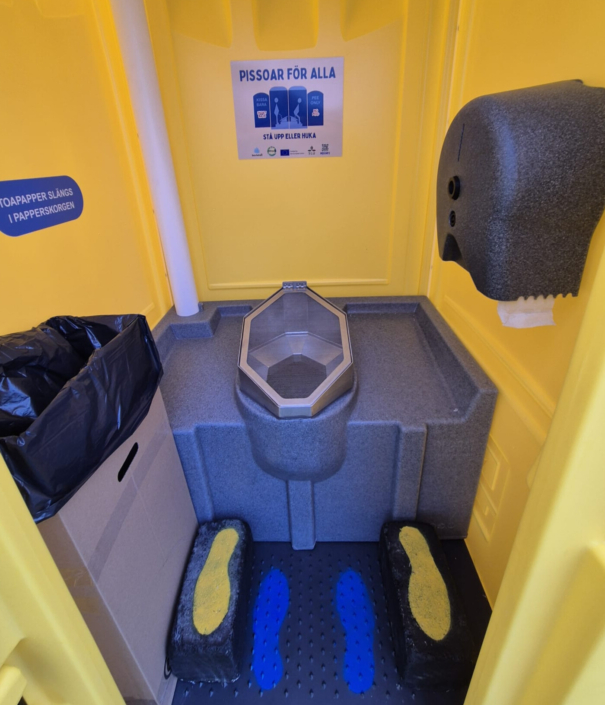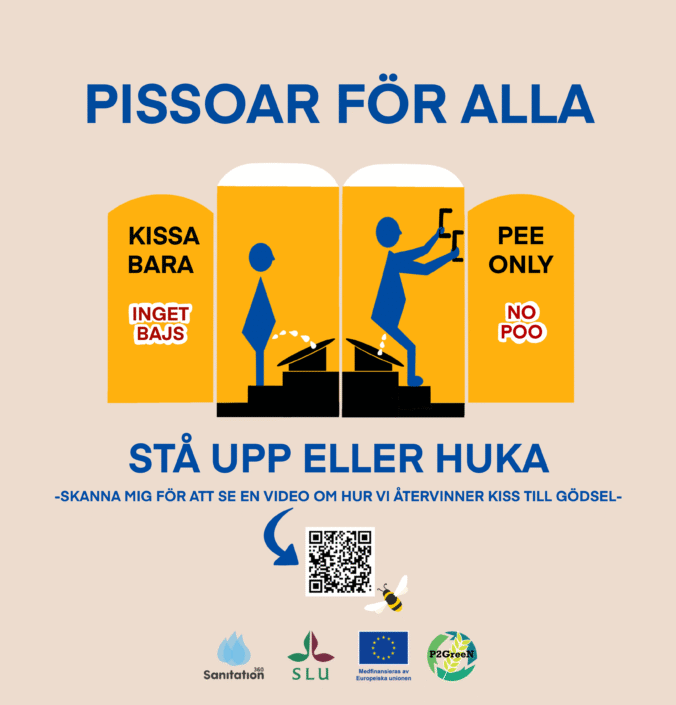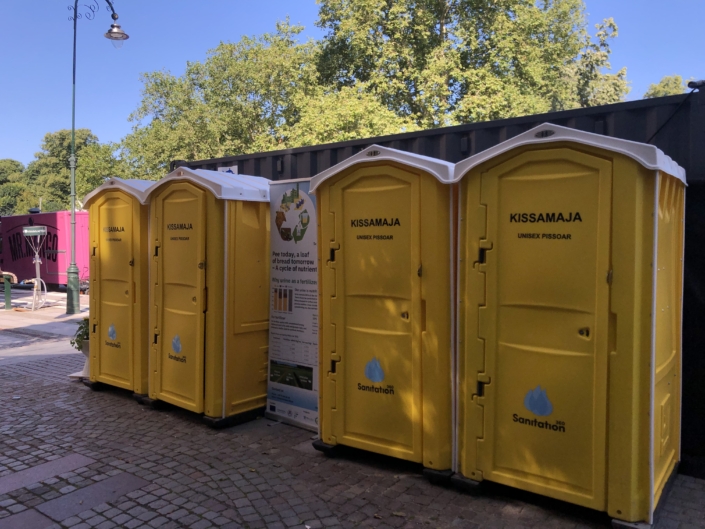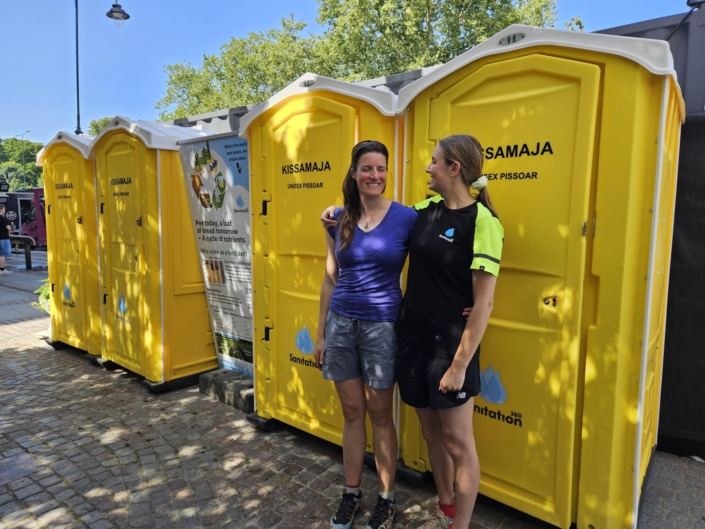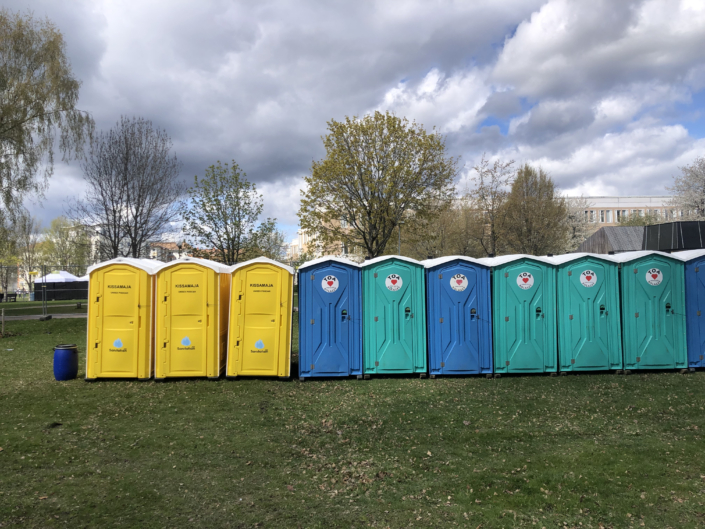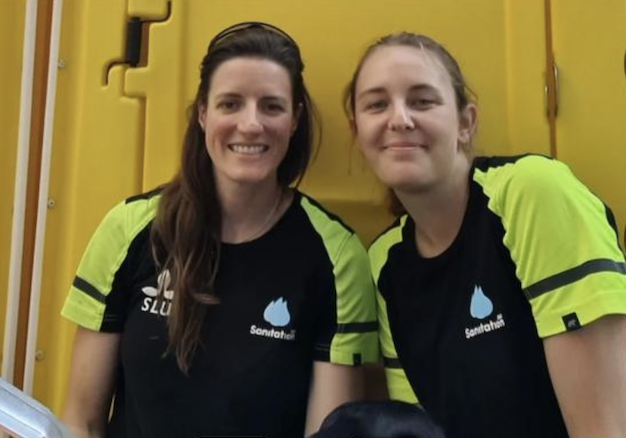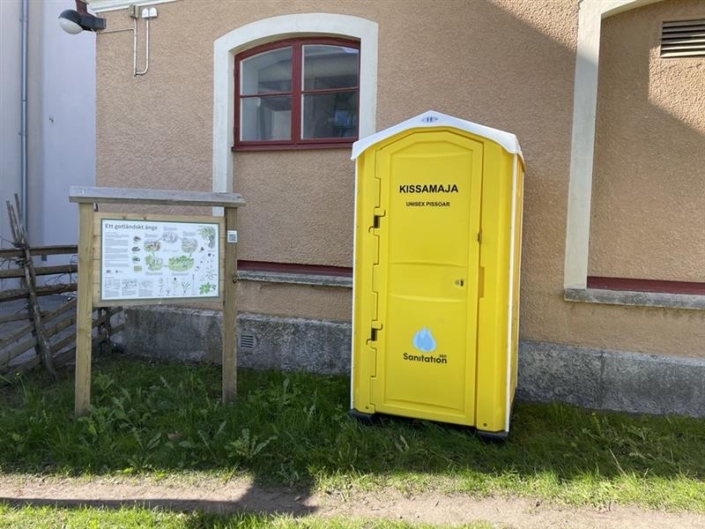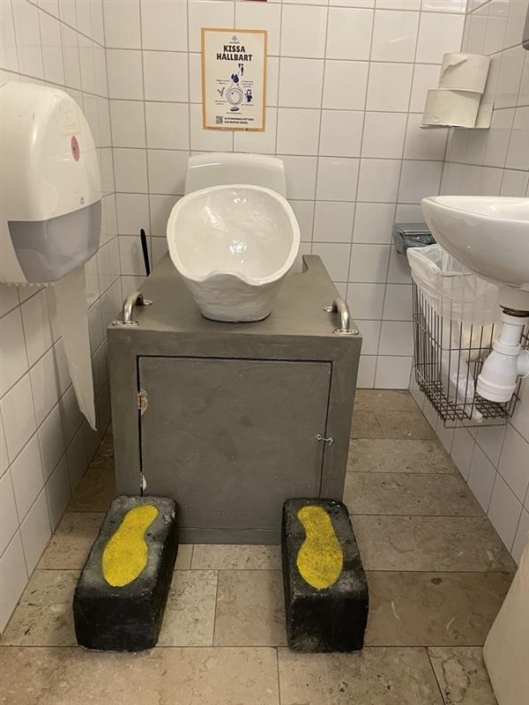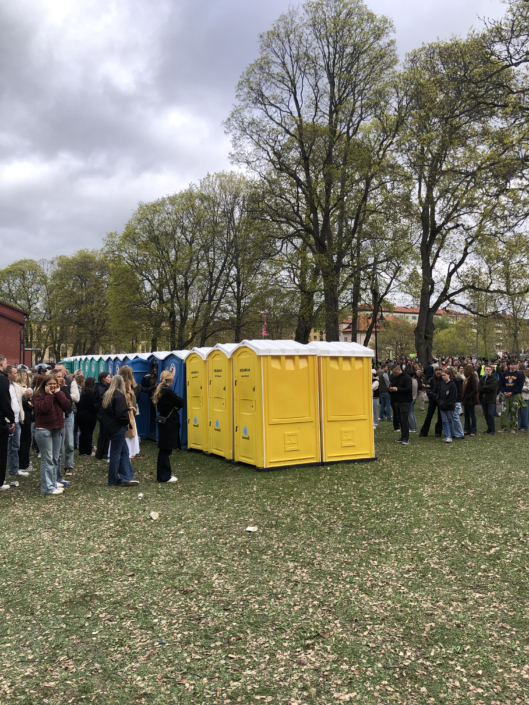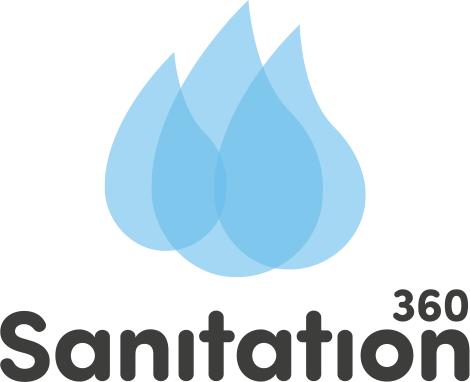What would you like to know?
- Where can I buy one of your systems?
Our Kissamaja is available for purchase and/or rental! We have both the complete unit (with the yellow bathroom structure) and also the insert that can be sold separately. If you are interested, please contact us directly for pricing and rental details.
We have two driers under development: single toilet system (3- 10 L per day treatment capacity, ideal for a family of 4) and large-scale system (>100 L per day treatment capacity). If you’d like to see one of our systems in operation, come and visit us. For the single toilet, visit the installation at VA Syd head office (Hjälmaregatan 3, Malmö). And for the large-scale system, we have an installation at the Studenternas football stadium in Uppsala, where urine collection and drying have been integrated as part of the stadium’s renovation.
- When can I expect to buy the fertiliser and what will it cost?
We aim to launch our urine fertiliser commercially by 2027 as we’re currently supplying all the fertiliser to local farmers growing barley, in connection to the deliverables of the EU-funded P2Green-project.
Large-scale production also requires significant infrastructure, and we are currently planning a facility on Gotland to process, dry, pelletize, and package urine fertilizer. Once operational, this facility will enable us to meet farmers’ demand for sustainable, circular fertilizers.
Our goal is to price our urine fertilizer competitively with mineral fertilizers which varies throughout the year depending on access and demand. Our cost to produce the fertiliser is higher, but we want to ensure accessibility for farmers. We are actively working to scale–up production and reduce costs to make urine fertilizer a viable economic alternative.
- How much fertiliser can be produced if urine from an entire country is collected?
The potential varies by country and population size. In Sweden, collecting and processing all human urine could replace approximately 30% of the mineral fertilisers used in agriculture. In South Africa, the replacement potential is even higher at around 50%. Countries with larger populations and lower reliance on synthetic fertilisers could see even greater benefits. Our technology is designed to be adaptable to different climatic and socioeconomic contexts to maximize its global impact.
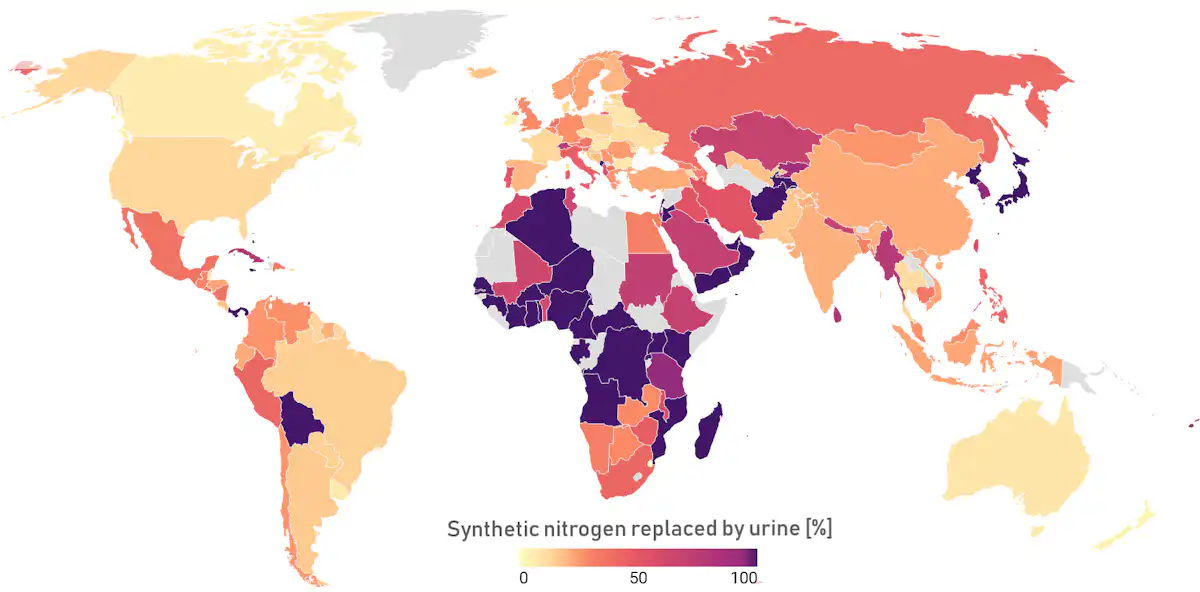
Simha, P. (2021). Substituting nitrogen and phosphorous used in agriculture with human urine. https://osf.io/7ckax/
How much fertiliser could be produced if all urine on Gotland was collected?
Gotland’s population of approximately 61,173 people (2022) and annual guest visits contribute to an estimated 1,405 tons of dry urine fertilizer per year. This could fertilize around 2,480 hectares of farmland, helping reduce dependence on imported mineral fertilisers while supporting local food production. *This is based on our own calculations*
- Are there any pathogens or heavy metals in your urine fertilizer?
Pathogens
Urine is pathogen free when excreted from a healthy individual. However, some pathogens can sometimes be present due to cross contamination from faeces or enter the urine from the environment once you’ve peed. To ensure the safety of those using the fertiliser, our specially engineered stabiliser eliminates any potential pathogens. Research confirms that our process renders the fertilizer pathogen-free and safe for agricultural use.
References:
Rumeau, M., Pistocchi, C., Ait-Mouheb, N., Marsden, C., & Brunel, B. (2024). Unveiling the impact of human urine fertilization on soil bacterial communities: A path toward sustainable fertilization. In Applied Soil Ecology (Vol. 201, p. 105471). Elsevier BV. https://doi.org/10.1016/j.apsoil.2024.105471
Senecal, J. (2020). Safe Nutrient Recovery from Human Urine—System and Hygiene Evaluation of Alkaline Urine Dehydration. Department of Energy and Technology, Swedish University of Agricultural Sciences. https://res.slu.se/id/publ/105754
Heavy Metals
Only in extremely low concentrations—significantly lower than in animal manure, which is one of the most widely used fertilizers. Additionally, heavy metal levels in urine are often lower than those found in drinking water. Most heavy metals that exit the human body do so through faeces rather than urine (Vinnerås, 2002). This makes urine a cleaner nutrient source compared to other organic fertilizers.
Research also shows that the most common synthetic fertiliser used by EU farmers has up to ten times the cadmium levels that are allowed in sewage sludge for agricultural use in Sweden (Region Gotland, 2019). Knowing that heavy metals are mainly excreted in our faeces, the levels in our urine are significantly lower than in most fertilisers used today.
References:
Region Gotland. (2019). Frågor och svar om REVAQ, uppströmsarbete, fosfor och slam. https://www.gotland.se/revaq
Vinnerås, B. (2002). The performance and potential of faecal separation and urine diversion to recycle plant nutrients in household wastewater. In Bioresource Technology (Vol. 84, Issue 3, pp. 275–282). Elsevier BV. https://doi.org/10.1016/s0960-8524(02)00054-8
eurofins. (n.d.). Analys av slam och vatten i REVAQ. Eurofins Environment Testing Sweden AB. https://www.eurofins.se/media/681694/revaq.pdf
- How does the urine collection to fertiliser process work?
Urine Collection Interface
Urine can be collected by any type of urine-diverting interface – meaning regular urinals (male/female/unisex), Laufen Save! Toilets, Wotsmans urine-diverting toilets, Ecosan urine-diverting toilets. The important part is that the urine is collected separately from the feces and toilet paper.
Urine Collection Container
The urine is collected directly inside the urinal in some cases (such as the portable urinals we use). In other cases, it is piped into a container. The size of the container does not matter, as long as (1) the stabiliser is in the container from the start and (2) the container is not a large open bucket (this can cause mal odour). We often collect the urine 25 L water containers and then transfer into 1 000 L containers.
Dosing: 10 g per L. This might need to be adjusted as we are uncertain of the urine chemistry in the local context – urine chemistry is dependent on food and liquid intake which varies greatly across regions.
The dosing is needed to prevent mal odour formation and to retain the nitrogen in the urine. Overdosing is ok as this helps preserve the nitrogen during storage. Under-dosing will result in mal-odours and emissions of nitrogen to the atmosphere during collection and fertiliser use.
Urine Storage
The collected urine can be stored directly in the collection container or transferred into a larger holding vessel (such as a 1000 L container). The container should be sealed and if possible protected from direct sunlight. The stabilised urine can be stored for 3 months if the containers are clean. If the containers are not clean (as in being re-used for storage), then ideally the urine should be used within 4 weeks. Nothing bad will happen to the urine if stored for longer, but there may be some mal odours forming.
Urine as fertiliser
The urine can be directly used as a liquid fertiliser. In general, urine is found to have 6 g of nitrogen per L. If possible, have the nitrogen concentration tested as this can differ geographically. Please calculate how much nitrogen is needed for the given surface area based on the specific needs of the plants and apply appropriately. Tips, if applying to:
· Bare soil and ungerminated seeds: then apply directly to the soil and mix in
· Established plants that are in rows: then apply 15 cm to the side of the plants and mix in, if possible.
· Established plants without rows (such as hay/grass): apply directly to the plants, and flow by irrigating with fresh water to rinse the leaves.
- Why urine?
Urine makes up only about 1% of our wastewater by volume, yet it contains 70–80% of the nutrients. In our human excreta alone, urine accounts for 80-90% of nitrogen, 50-65% of phosphorus and 50-80% of potassium found in human excreta. Therefore, by focusing on the urine fraction, we can more easily store, transport and process the liquid, whilst still recycling most of the nutrients in our wastewater. Urine is also unique in being the wastewater fraction with the least number of pathogens and heavy metals – making it less energy intense to process and safely manage.
References:
Viskari, E.L., Grobler, G., Karimäki, K., Gorbatova, A., Vilpas, R., & Lehtoranta, S. (2018). Nitrogen Recovery With Source Separation of Human Urine—Preliminary Results of Its Fertiliser Potential and Use in Agriculture. Frontiers in Sustainable Food Systems, 2, 32. https://doi.org/10.3389/fsufs.2018.00032
Wald, C. (2022). The urine revolution: How recycling pee could help to save the world. Nature, 602(7896), 202–206. https://doi.org/10.1038/d41586-022-00338-6
Senecal, J. (2020). Safe Nutrient Recovery from Human Urine—System and Hygiene Evaluation of Alkaline Urine Dehydration. Department of Energy and Technology, Swedish University of Agricultural Sciences. https://res.slu.se/id/publ/105754
Nagy, J. & Zseni, Aniko. (2017). Human urine as an efficient fertilizer product in agriculture. Agronomy Research. 15. 490-500. https://www.researchgate.net/publication/317745835_Human_urine_as_an_efficient_fertilizer_product_in_agriculture
Hernández Leal, L., Tervahauta, T., & Zeeman, G. (2017). Resource recovery from source separated domestic wastewater; energy, water, nutrients, and organics. In J. M. Lema & S. Suarez (Eds.), Innovative Wastewater Treatment & Resource Recovery Technology: Impacts on Energy, Economy and Environment. London, UK: IWA.
- Does your fertiliser smell?
There is an odour, like any bio-based fertiliser. However, the odour is much less offensive than unstabilised urine. Our stabilizer prevents ammonia formation, reducing the odour significantly. Instead, the dried urine has a mild metallic scent and is less odorous than many traditional fertilizers.
- Are pharmaceutical residues in urine-based fertiliser a risk?
Sanitation360 fertiliser was evaluated by a third-party for the detection of 150 different compounds (ranging from pharmaceuticals to pesticides). Within the fertiliser, 40 compounds were detected. Risk modelling using Swedish and EU assessment tools and based on the maximum fertiliser application rate, shows that the maximum applied load of pharmaceuticals would be 0.5 g of compounds per ha (the non-detected compounds were included in this calculation with the detection limit as the mass) which is ten times lower than the proposed guideline value of 5 g/ha. This is far below the PECsoil threshold of 100 µg/kg and the PECsurface water threshold of 1 µg/L, even under worst-case mobility and rainfall conditions.
Extensive monitoring of our field trials shows that pharmaceuticals are not a risk. In a 2024 Gotland field study, 40 pharmaceuticals were analysed from urine-based fertiliser through the entire cultivation cycle. Only seven compounds were detected in the fertiliser, at concentrations between 60 and 700 ng/g. None were detected in soil, irrigation water, or crop tissues after application.
These findings indicate no measurable transfer of pharmaceuticals to the environment or food chain, and confirm that certified urine-based fertilisers meet stringent health, environmental, and safety requirements.

